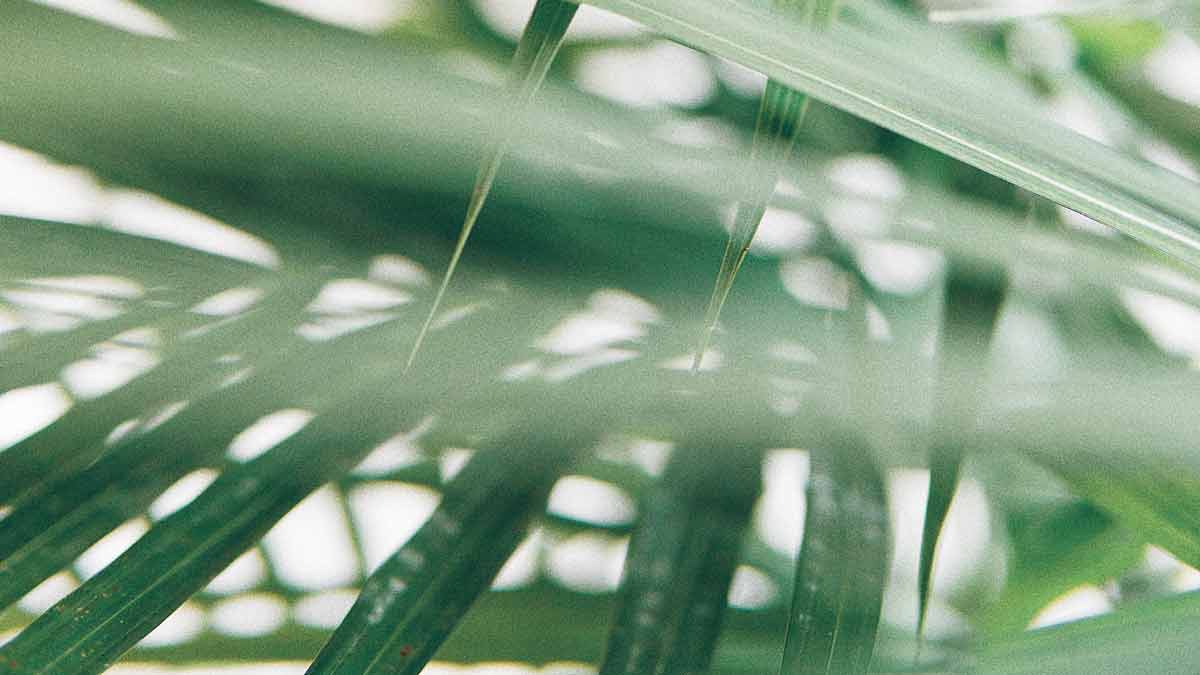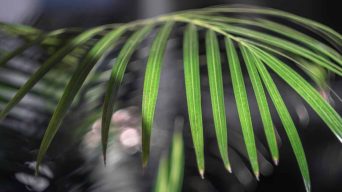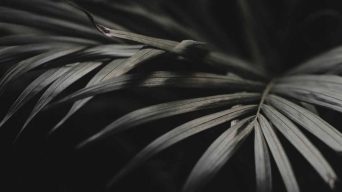Key Takeaways
- Various factors, including fungal infections, pest infestations, low humidity levels, nutrient deficiencies, and lime deposits, can cause white spots on Majesty Palm leaves.
- Proper maintenance practices like regularly inspecting and cleaning the plant, maintaining proper humidity levels with a humidifier or misting, and adjusting watering schedules and fertilization can prevent white spots from appearing in the first place.
- Treatment options for white spots include using fungicides and insecticides and removing affected leaves, and identifying the underlying cause of white spots before applying any treatment method.
Majesty Palms are popular houseplants that bring a touch of tropical elegance to any space, but seeing white spots on their leaves can be alarming for plant owners.
Uncovering the reasons behind these spots is crucial to maintaining the health and vitality of your beloved palm.
This guide will help you identify and understand the various causes of white spots, ranging from pests and diseases to environmental factors such as humidity or nutrient deficiencies.
What Causes White Spots On Majesty Palm Leaves?
Various factors, including Graphiola Leaf Spot, Scurf Disease, pest infestation, low humidity levels, powdery mildew, nutrient deficiency, and lime deposits, can cause white spots on Majesty Palm Leaves.
It is essential to identify the root cause of the issue and take immediate action to prevent further damage to the plant.
Graphiola Leaf Spot
Graphiola leaf spot, a fungal infection, is one of the primary causes of white spots on mature palm leaves.
This disease often begins with tiny raised black spots and gradually develops into noticeable white patches.
To minimize the chances of this issue affecting your beloved majesty palm, it’s crucial to stay vigilant regarding plant care and maintenance.
Regularly inspecting your indoor plants for signs of distress will help you detect issues before they worsen.
For instance, if you notice that only the older leaves on your palm tree exhibit symptoms like discolored patches, while there are no visible marks on the youngest leaves, this may indicate that Graphiola leaf spot has taken hold.
Scurf Disease
Scurf Disease, a common cause of white spots on Majesty palm leaves, is triggered by the fungal infection Stigmina lobulata.
This fungus appears as tiny white or silver spots on your plant’s leaves and stems.
To effectively combat scurf disease in its early stages, begin by carefully removing any infected leaves using clean pruning shears to prevent further spreading.
Then apply an appropriate fungicide, such as copper-based options or others specifically recommended for tackling scurf infections.
In addition to treating existing issues, consider preventative measures like proper watering and fertilization techniques that can significantly reduce the likelihood of future outbreaks.
Pest Infestation
Pest infestation is another potential cause of white spots on Majesty Palm leaves.
Scales, spider mites, mealybugs, and whiteflies are common pests that can attack your indoor palm trees, leaving behind small discolored areas or patches of fine webbing.
To effectively treat pest-infested Majesty palms, use a cloth or soft brush to remove insects from the leaves gently.
Follow up with an application of insecticidal soap or neem oil to combat these pesky invaders further.
Regular inspections will help you catch any infestations before they escalate into more significant problems for your beloved houseplant.
Low Humidity Levels
If you notice white spots on your Majesty palm leaves, low humidity levels could be the culprit.
These palm trees are native to tropical regions with high humidity levels and require humid environments to thrive.
To solve this problem, try increasing the humidity around your plant by placing a humidifier near it or regularly misting the fronds with water.
You can also place a tray of water near your plant or group it with other plants to create a microclimate that promotes higher humidity levels.
Powdery Mildew
One of the leading causes of white spots on Majesty palm leaves is powdery mildew, a fungal disease that affects many plants.
This white fungus can cover palm tree leaves with mold, making them look dull and unattractive.
Fortunately, there are ways to prevent and control powdery mildew.
It’s essential to wash off the infected leaves immediately to stop spreading spores.
Move the plant into more light or add artificial light, which will help reduce humidity levels and discourage further growth.
Nutrient Deficiency
One of the common causes of white spots on Majesty palm leaves is nutrient deficiency.
If your plant isn’t getting enough nutrients from its soil, it may develop brown spots that can turn white or yellow over time.
Maintaining a proper balance of nutrients for your Majesty palm is essential to prevent these issues from occurring.
Ensure you use high-quality potting mixtures and acidic soil blends specific to palm trees.
Be careful not to overfertilize your plant, which can cause problems.
Lime Deposits
One lesser-known cause of white spots on Majesty Palm leaves is lime deposits.
These are caused by hard water that contains high levels of calcium and magnesium, which can leave behind white or yellowish flakes on the surface of the leaves.
Wipe the affected areas with a damp cloth and apply a vinegar and water solution to remove these deposits.
However, it’s important to prevent lime deposits from occurring in the first place.
The best way to do this is to avoid using hard water when watering your palm tree; instead, opt for distilled or rainwater if possible.
Effective Treatment Options For White Spots On Majesty Palm Leaves
Several effective options are available to eliminate white spots on your majesty palm leaves.
These include using fungicides and insecticides, adjusting humidity levels, ensuring proper watering and fertilization, and removing the affected leaves.
Fungicides
Fungicides can effectively treat white spots on Majesty Palm leaves caused by fungal infections like powdery mildew and Graphiola leaf spot.
These products should be used according to the manufacturer’s instructions and applied only after properly identifying the type of fungus involved.
Inorganic fungicides are often recommended as they can provide quick results, but organic alternatives like tea tree oil can also be effective.
Regular application is essential to control the fungus’s spread and protect the plant’s affected parts.
It is important to note that fungicides are not a guaranteed cure and may not always eliminate the underlying cause of white spots on palm leaves.
Therefore, proper care, including maintaining appropriate humidity levels and avoiding overfertilization, is necessary for preventing fungal infections in the first place.
Insecticides
Insecticides are effective treatment options for pests that cause white spots on Majesty Palm leaves.
Here are some commonly used insecticides:
- Pyrethrin-based insecticides: These insecticides target a broad range of insects, including spider mites and mealybugs. They are safe for pets and humans but should not be used on sensitive plants.
- Horticultural oil sprays: These oils smother insects and their eggs. They are less toxic than conventional pesticides and safe for most plants.
- Insecticidal soaps: These soaps penetrate the outer shell of soft-bodied insects, causing dehydration and death. They are safe to use on a wide variety of plants.
When using insecticides, follow the instructions carefully to avoid negative impacts on your palm tree’s health.
Identifying pest infestation before using any insecticide is essential because different pests require different treatments.
Regularly inspecting your palm tree for pests prevents white spots from developing on the leaves.
Adjusting Humidity Levels
Maintaining proper humidity levels is crucial for keeping Majesty palms healthy and free from white spots on their leaves.
To thrive indoors, these tropical plants require high humidity levels, ideally between 50-60%.
To adjust humidity levels, plant owners should mist their palm leaves regularly or use a humidifier near the plant to increase overall moisture in the air.
Placing a tray filled with water beneath the plant’s pot or grouping it with other plants also helps maintain adequate humidity levels.
Proper Watering And Fertilization
Majesty palms require a consistent watering schedule and well-draining soil to prevent waterlogged roots, which can cause stress on the plant and lead to leaf spots.
Watering should be done when the top inch of soil feels dry to the touch.
Be sure not to overwater, as it can cause root rot and other fungal diseases that can manifest as white spots on leaves.
Fertilization is also essential for maintaining healthy palm trees, as they need nutrients such as nitrogen, phosphorus, and potassium.
It’s important to note that too much fertilizer or fertilizing during colder months may contribute to nutrient deficiencies, leading to weakened growth or yellowing leaves.
Diluted foliar or water-soluble fertilizer can also be sprayed directly onto affected leaves for a quick nutrient boost.
Removing Affected Leaves
If you notice white spots on your Majesty Palm’s leaves, it’s crucial to remove the affected leaves immediately.
This helps prevent the spread of disease and ensures that the healthy parts of the plant remain intact.
It’s important to dispose of infected leaves properly by placing them in a plastic bag and sealing it before throwing them away.
Remember to wash your hands and sterilize any tools used during pruning to avoid spreading the infection further.
Prevention Strategies For White Spots On Majesty Palm Leaves
Maintaining appropriate humidity levels, frequent inspection and cleaning, proper fertilization and watering without overfertilization, and quarantining new plants before introducing them to your current ones are crucial steps in avoiding the development of white spots on Majesty palm leaves.
Maintaining Proper Humidity Levels
Majesty Palm plants thrive in humid environments, but excessively high humidity levels can cause white spots on their leaves.
Consider incorporating a fine-mist mister or humidifier to maintain proper humidity levels for your indoor plant.
These tools can help boost your home’s indoor humidity and prevent dryness that may harm the Majesty Palm’s fronds.
It’s important to note that some insects could thrive in overly humid conditions caused by water droplets left behind after watering rather than direct contact with wet soil.
Therefore, always maintain high humidity without overwatering your palm tree.
Regularly Inspecting And Cleaning The Plant
Proper plant maintenance is essential to keeping your Majesty Palm healthy and happy.
Regular inspection and cleaning of the plant are associated with prevention strategies for white spots on palm leaves.
Start by checking for any signs of disease or pests, such as yellowing leaves, spotting, or webs.
You should also clean off dust accumulating on the fronds with a damp cloth.
Dust can impair photosynthesis and attract pests that could feed on the affected area when it gets worse over time.
Properly Fertilizing And Watering
Proper fertilizing and watering are essential to preventing white spots on your Majesty Palm leaves.
Fertilization should be done regularly with a balanced fertilizer, such as 8-2-12, to provide the plant with all the necessary nutrients for healthy growth.
Watering is also crucial in preventing white spots.
Water the base of the palm tree rather than getting water on its leaves, which can attract fungi that cause leaf spots.
Hard water can build up mineral deposits, leading to future white spot problems.
By fertilizing and watering your Majesty Palms properly, you’ll ensure they receive just enough nutrition and hydration without causing any damage from overdoing it.
Avoiding Overfertilization
Overfertilization can harm your palm plants and cause white spots on the leaves.
When fertilizers are applied excessively or too frequently, they attract fungi that may lead to fungal infections and nutrient deficiencies.
To avoid over-fertilizing your palms, apply the right amount of fertilizer at appropriate intervals.
Most palms require a slow-release fertilizer with micronutrients such as magnesium, iron, manganese, and zinc.
It’s important to balance your fertilizing regimen with proper irrigation and watering.
Overwatering can flush out essential nutrients from the soil and lead to soggy roots, which may also create an environment for fungi growth on the leaves of your palm plant.
Quarantining New Plants
Before introducing a new plant to your indoor garden, it is important to quarantine it first.
This may seem like an unnecessary step, but it can save you a lot of trouble down the line.
During quarantine, keep the new plant in a separate room with good air circulation and away from direct sunlight.
Check the plant regularly for signs of yellowing leaves, white spots, or insect activity.
If you notice anything unusual, immediately address the issue before allowing the plant into your main collection.
Final Thoughts
Various factors, including pest infestations, fungal diseases, low humidity levels, and nutrient deficiencies, can cause white spots on Majesty palm leaves.
Fortunately, many effective treatments and prevention strategies are available to help keep your palm tree healthy and beautiful.
Regular maintenance practices like pruning, fertilizing, and watering can go a long way in preventing white spots from appearing in the first place.
And if white spots show up on your palm leaves, identify the underlying cause before applying any treatment.







